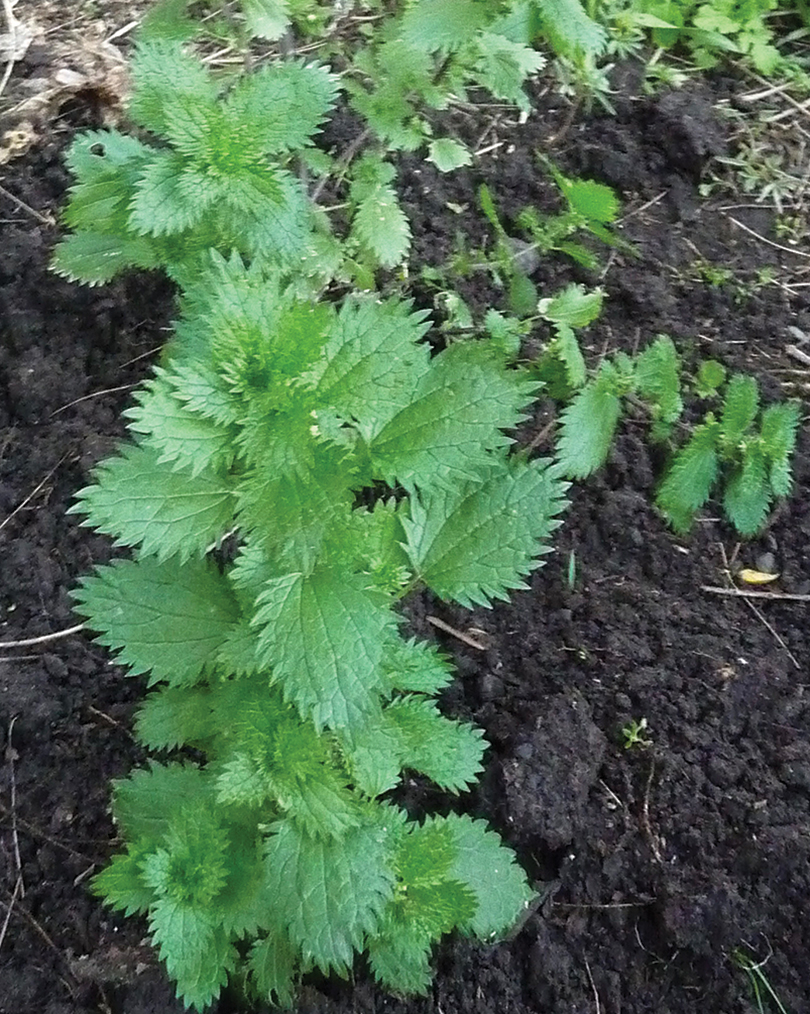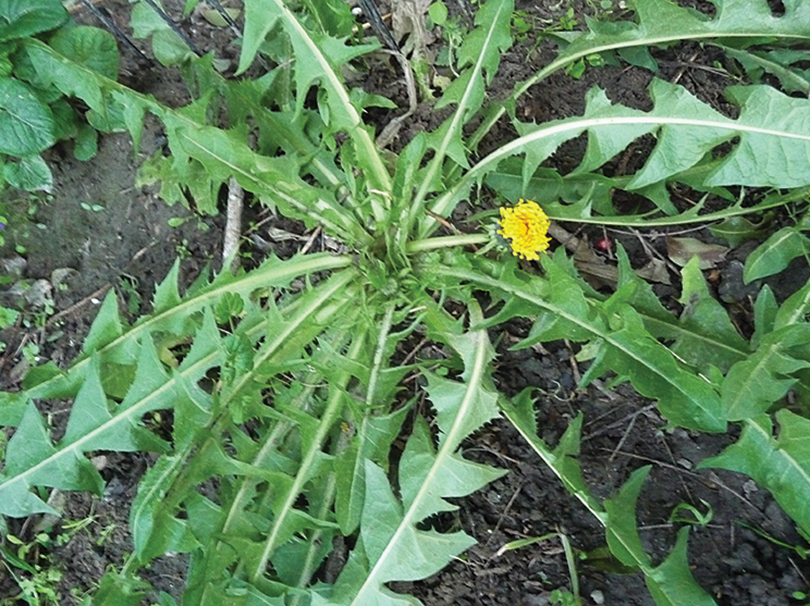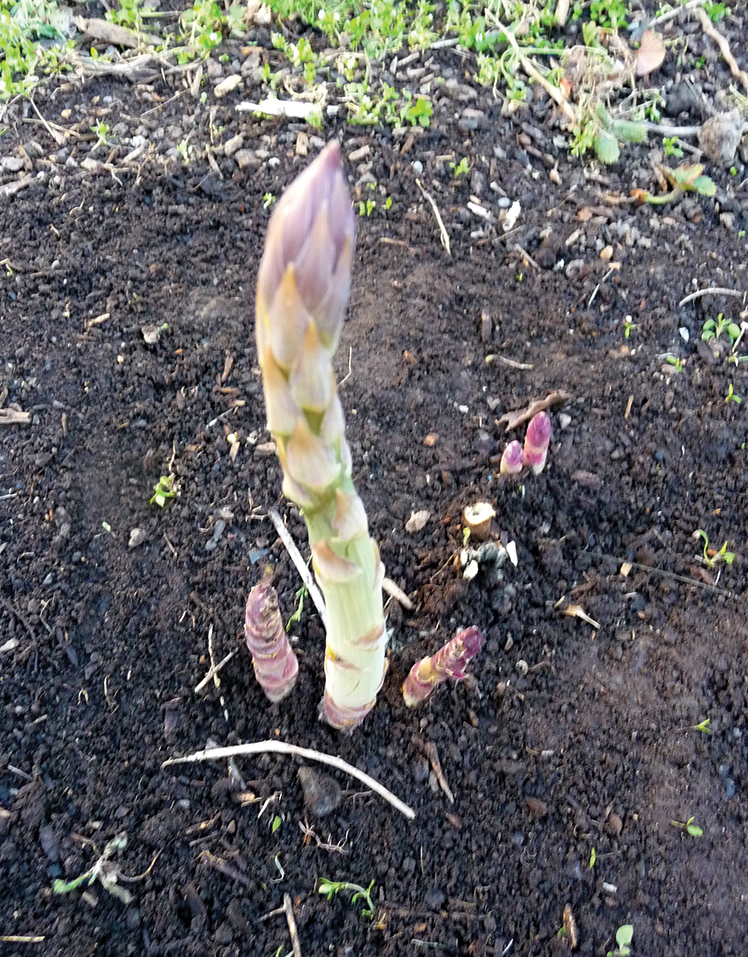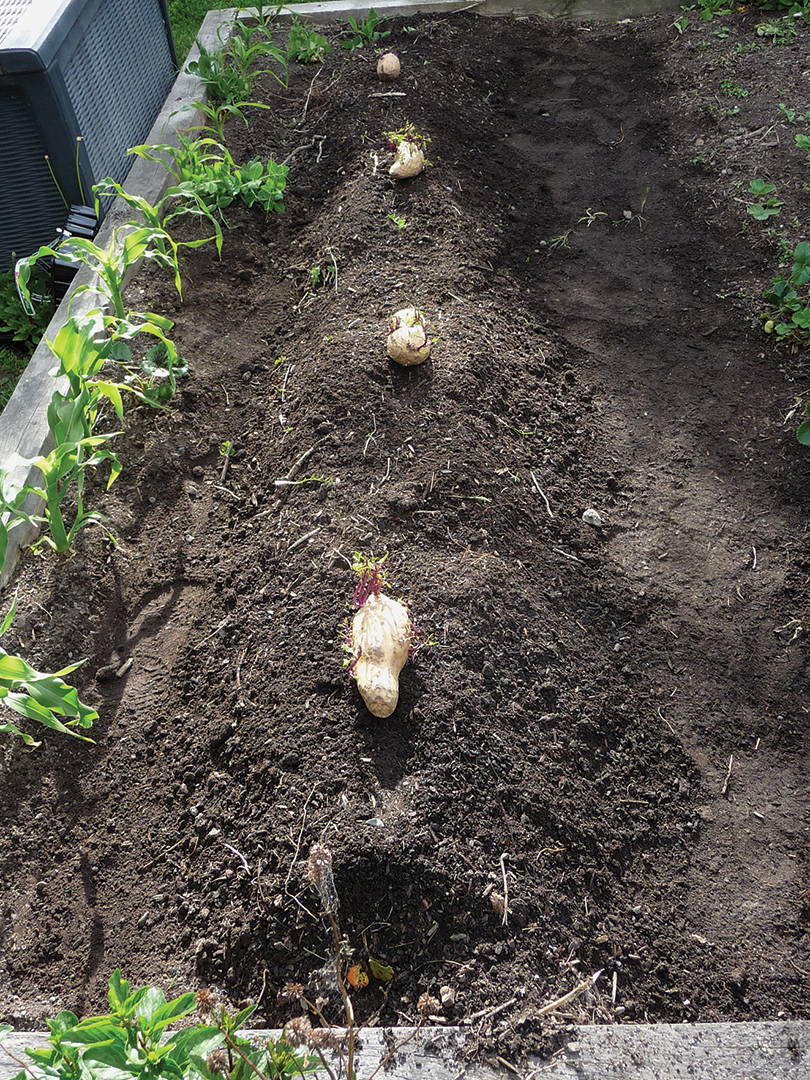Hei Mahi Māra Wild weeds and asparagus
Oct 7, 2019

A beginner’s guide to growing organic vegetables
Nā Tremane Barr
 Each spring before I dig in the cover crops and put compost on the soil, my wife and I have active discussions over the place of weeds in my māra. I prefer as few weeds as possible so that there is maximum space available for the more palatable plants I prefer eating, like strawberries and asparagus. My wife, however, likes to have a ready supply of “weeds” to make into teas and pestos, so I need to make sure there are patches of them available for harvesting. Two of the most common wild food weeds found in a māra are nettle and dandelions; and while I don’t appreciate too many of them in my māra, I understand there is a place for allowing some of them to grow (and it saves money by not having to go to marriage counselling).
Each spring before I dig in the cover crops and put compost on the soil, my wife and I have active discussions over the place of weeds in my māra. I prefer as few weeds as possible so that there is maximum space available for the more palatable plants I prefer eating, like strawberries and asparagus. My wife, however, likes to have a ready supply of “weeds” to make into teas and pestos, so I need to make sure there are patches of them available for harvesting. Two of the most common wild food weeds found in a māra are nettle and dandelions; and while I don’t appreciate too many of them in my māra, I understand there is a place for allowing some of them to grow (and it saves money by not having to go to marriage counselling).

Nettle is an adaptogenic herb that is packed with hundreds of phytochemicals, and is high in silica and 40 other trace minerals that are bioactive and bioavailable. These anti-inflammatory nutrients help revive tired organs, particularly the adrenals, to help ward off adrenal fatigue – a common complaint brought on by the stresses of the modern world. Nettle is also very supportive of the endocrine system in general, and the reproductive organs, particularly for females. It can be a real pain, but its healing powers are undeniable. Nettle tea is a mainstay of my recovery from cancer, and nettle deserves a place in any māra.

Above: Common weeds, nettle and dandelion – dandelion root and nettle leaves make a powerful tea.
Dandelions are particularly useful in spring, as the alkaloid bitterness in the new leaves helps get the blood pumping in a way that supports and cleanses organs of radiation, toxic heavy metals, DDT, and other modern poisons. The root is even more powerful in its ability to cleanse the body’s organs. The flowers are the least bitter part, and make a colourful addition to a salad. All parts of the dandelion contain phytochemicals, vitamins A and B, manganese, iodine, calcium, iron, magnesium, and selenium. These nutrients help purify the blood, squeeze toxins out of the lymphatic system, and help the body fight off disease. Dandelion root and nettle leaves make a powerful tea, made more palatable with a little honey.
Two of the most common wild food weeds found in a māra are nettle and dandelions; and while I don’t appreciate too many of them in my māra, I understand there is a place for allowing some of them to grow.
Asparagus
Another addition to my māra, at the insistence of my wife, has been asparagus (actually she just went ahead and planted them in the strawberry patch without letting me know). This was about three springs ago, so it was only last summer that they started to produce a harvestable crop. They are a very tasty addition to the menu. Turns out that asparagus is a powerhouse of life-giving energy through its phytochemicals (chlorophyll and lutein), easily absorbable B vitamins, silica, and vital trace minerals such as zinc, phosphorous, magnesium, and selenium. In addition, asparagus is very alkaline, and reduces acidity in the body. This, along with all its other nutritional benefits, makes it a perfect food to help ward off and/or recover from cancer.

Asparagus is relatively easy to grow, but as a perennial, requires a lot of patience. Normally it takes about three years before the spears can be harvested in any abundance for the first time. They can, however, be productive for more than 20 years, so are worth the effort to grow. While asparagus can be grown from seed, this requires even longer to produce; so it is easier to buy the crowns from a garden centre and get a head start.
Asparagus needs to be planted in fertile soil with a pH of 6.5 to 7. While late winter is the best time to plant them, early spring is also good. Before planting the crowns, cultivate the soil to a spade’s depth to make it loose and friable while working in compost and other organic fertilisers. The asparagus crowns should be planted with the roots facing down, at a depth of 15cm, and 30cm apart. Asparagus doesn’t like to have wet roots, but does prefer moist soil. A covering mulch of straw can be beneficial in summertime to avoid the roots drying out.

Above: planting kūmara.
For the first couple of spring seasons after planting, it is generally best to let most of the spears go through their full life cycle, growing into tall, ferny-looking stems that can reach heights of more than 2 metres. This allows the plant time to establish its root system, from which future seasons’ spears will grow. In the autumn, these ferny stems can be cut down to soil level. Once they do start producing, the harvesting runs for 6-8 weeks from late spring to early summer. As a gross feeder, needing a lot to eat, asparagus will need new compost every spring, and regular doses of organic liquid fertiliser applied at the base of the plant where the spears grow from, to help maximise production. Once producing, it is important to harvest the spears regularly, as they can become woody if left for too long. It is also important to cut the spears off at ground level with a sharp knife – trying to rip them off can damage the root system.
While this crop does require patience, it will produce tasty and healthy rewards for decades to come with minimal maintenance – it’s well worth the effort.
Continuing experiments with GANS
My experiments with using plasma GANS gardening products on my crops has continued through winter with success. My tunnel house has been full of productive salad crops all winter, while outside, the usual winter crops have been more productive than normal, particularly the sprouting broccoli and Brussels sprouts. This will be the first full growing season using the plasma GANS for every crop from the beginning; it will be interesting to see the results. I will experiment further with kūmara by growing all three types: red-skinned Ōwairaka, gold Toka Toka, and the orange cultivar Beauregard (see TE KARAKA 82 for details on how to grow kūmara). The Keshe Foundation, which develops new technologies to address global environmental challenges, recently announced a partnership with China to further develop plasma GANS not just for agriculture, but free energy generation and space flight. If only people stopped wasting their time complaining about fossil fuels and actually focused on developing the science and technology of free plasma energy, as explained by Nikola Tesla and Mehran Keshe, we would all be a lot better off.
Mahi Māra and the Plasma GANS Series
https://ngaitahu.iwi.nz/our_stories/hei-mahi-mara-plasma-in-the-mara-tk80/
https://ngaitahu.iwi.nz/our_stories/autumn-mahi-mara-song-of-the-tipuna-tk81/
https://ngaitahu.iwi.nz/our_stories/hei-mahi-mara-tk82/
Keshe Foundation
https://keshefoundation.org
Keshe Foundation Announces Major Funding Initiative by China
https://www.youtube.com/watch?v=kerCjeJzAM0
GANS Plasma Gardening Products
https://plasmainnature.com/product-category/plasma-garden/
Keshe Foundation Public Plasma Gardening Videos
https://www.youtube.com/watch?v=nagenOoJQoU&index=18&list=PLpCKWzA-bp9u08-2qiX0h2Y4HFgS51xHw
Tremane Barr is Ngāi Tahu/Kāti Māhaki ki Makaawhio. He has been gardening organically for more than 30 years. Tremane is currently a self-employed mauirpreneur whose whānau owned and run business sells essential oils and natural skin care products containing native plant extracts: https://zurma.co.nz/